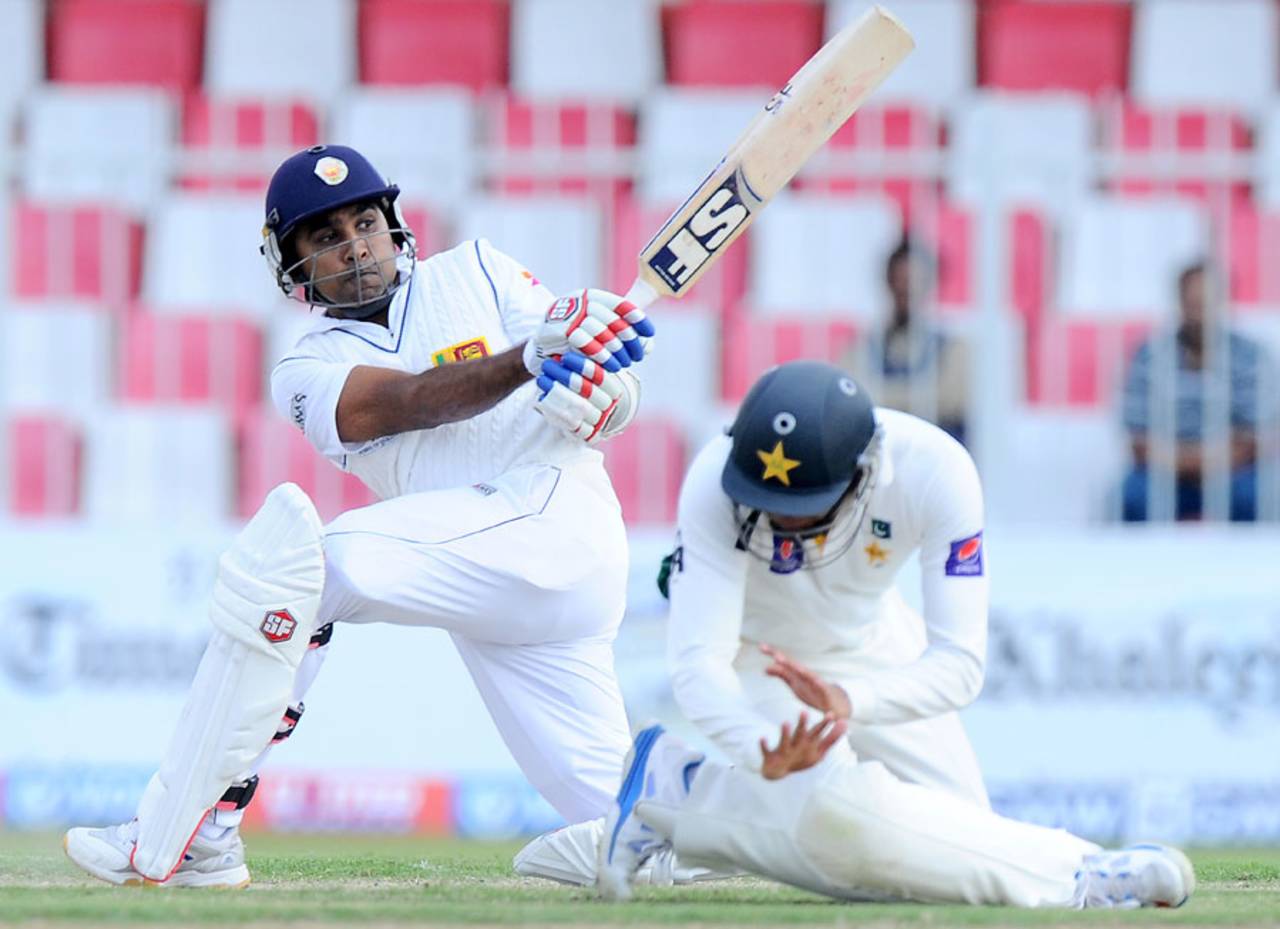Every
Mahela Jayawardene innings had its own persona. Every Jayawardene stroke was self-expression. This was true when he played a rasping square cut against the turn to fetch his first Test boundary
in 1997. It was true when he hit a searing reverse-sweep off Saeed Ajmal at Galle,
on Sunday.
His batting has filled grounds since he was 15. He has won Tests off his own blade, and saved a few as well. He has taken more
international catches than any other cricketer, many while captaining Sri Lanka with a creativity that has not been seen elsewhere in international cricket this century. From Nalanda College to Lord's, from softball cricket on Colombo streets to the dustbowls that he alone could tame, he has never ceased to be himself. Across every format, in every capacity, Jayawardene has never ceased to be among cricket's most elemental pleasures.
Most will remember his artistry. Other batsmen are often products of hard work and clear thinking, of processes that have been hammered in, with shots that have been honed, along with the muscles that power them. Jayawardene does all the work, but at the crease he is a free spirit. That liquid cover drive that sent balls in almost any direction on the off side was more dependent on his mood than the physics of the delivery that came to him. The sweep that could go anywhere from deep midwicket to the finest fine leg, in any combination of power and elevation, was decided in an instant, on a whim.
Among Sri Lankan batsmen, his technique has been uniquely resistant to change. The trigger movement is almost the same. The grip is a little lower since he started out, but the hands still feel for the ball when the feet are not quite there. That is not to say he has not innovated with the times. But although new strokes have been learnt in his later years, the essence of his cricket remains as lovingly refined as it has always been. Twenty-first century aggression filtered through age-old method, yielding savagery that seems fashioned from silk. The uppercut off Morne Morkel during his
most recent Test hundred was played late, beneath the eyes, over the fielders for four.
That Jayawardene was so often a victim of his own ambition only made his success sweeter. He would open the face of his bat to deflect the ball to third man on seaming decks. He played the hook and the pull when leg-side traps had been set. Bowlers always had a chance, so every late cut past a full cordon felt like an escape. Every trip down the pitch to loft spinners against the turn was a shot of adrenaline.
Was there a more compelling force than him when in full flow? When he was at the crease, sometimes even dot balls were electric. Singles were scored off paddle sweeps dragged from way outside off. Twos were chipped just over the circle, inches from the fielder's reach. A drive down the ground when the ball was pitched up, moving miles; a flick through midwicket when reverse swing was on offer. You wondered why he played this way - why someone so tactically astute would not recognise the benefits of staying safe. But Jayawardene lived on a precipice because he was at the cricket for the same reason as the spectator. Helplessly instinctive, craving attack, he went to the crease for the taste of the battle, for the smell of adventure.
Among Sri Lankan batsmen, he has played the biggest share of great innings, giving each one a different texture and a different hue. The
374 was the monster that grew out of a counter-attack. The fourth-innings
123 at the P Sara Oval little more than a week later was a masterclass in control. The
105 against Australia, on a Galle surface that looked like a cluster bomb had attacked it, was pure survival. Even within the same innings, he would transition like an orchestra through a symphony. Staccato singles and twos gave way to long slow notes, then in a surge of inspiration, the exhilarating crescendo came. Bowlers rarely knew what was next. Fans had no idea. Jayawardene often didn't either.
He could never let a game drift in his first stint as captain. Almost every field gave the batsman a trap to think about. Often they would fall, hitting to somewhere else, but Jayawardene would celebrate like it had all been planned, racing to greet the bowler like they had just pulled off a prank together. Under his guidance, the men around the bat for Muttiah Muralitharan were not just vultures hovering above a prospective meal, they were co-instigators of the action; a living, breathing, sharpened phalanx, almost as central to Sri Lanka's threat as the man whirring the ball in.
Jayawardene averages 50.02 before his final Test. If he is dismissed twice, he needs 94 runs to keep that figure above 50. His less flattering returns outside Asia are known. That edginess against the seaming ball in the channel has been well laid out.
But those who watched Jayawardene play will not forget how he made them feel - the way his innings grabbed you by the collar and took you on a ride. They will not forget the late cuts or the drives, the sinking despair or the dizzying elation. Or the way Jayawardene lived and died, on the edge, for the thrill.
